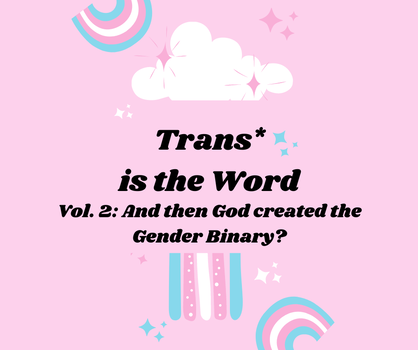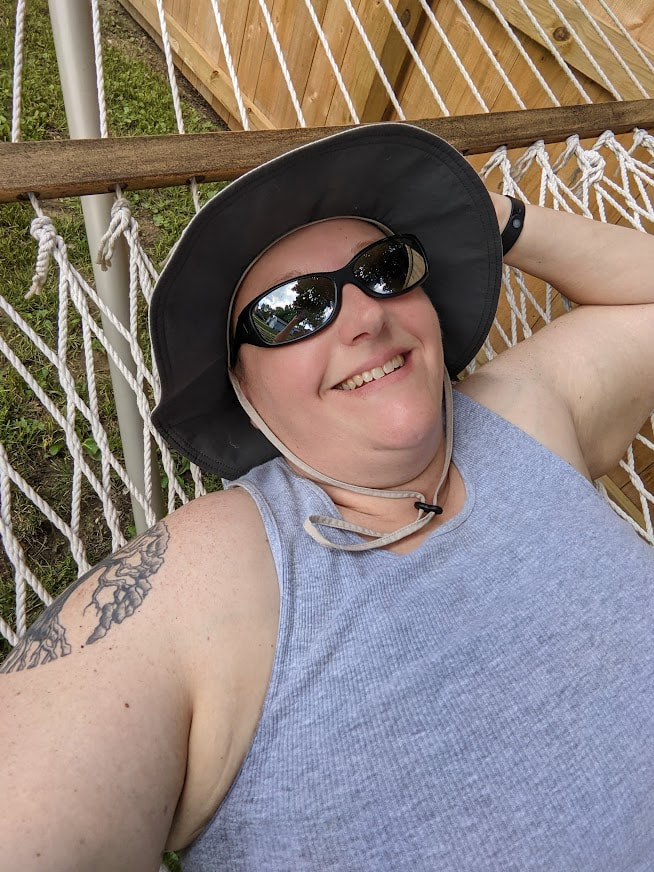 One of the places in scripture that people often turn to in order support the concept of two genders is the first chapter of the book of Genesis, particularly verses 26-27. I'll even save you the trouble of looking it up: Then God said, ‘Let us make humankind in our image, according to our likeness; and let them have dominion over the fish of the sea, and over the birds of the air, and over the cattle, and over all the wild animals of the earth, and over every creeping thing that creeps upon the earth.’ So God created humankind in his image, in the image of God he created them; male and female he created them. This might seem pretty straightforward. I mean, there it is in black and white: Male and female God created them. But these verses don't exist in isolation. They are part of a larger creation story found in Genesis 1 filled with symmetrical pairs of separation: Light and dark, land and sky, day and night, land and sea. The pairs continue with vegetation and animals. Animals of the land and air. Plants that bear fruit and plants that bear seed. But these pairs are in no way meant as limitations to creation. United Methodist deacon, M Barclay (who identifies as nonbinary), puts it this way: “This chapter talks about night and day and land and water, but we have dusk and we have marshes. These verses don’t mean ‘there’s only land and water, and there’s nowhere where these two meet.’ These binaries aren’t meant to speak to all of reality—they invite us into thinking about everything between and beyond.” I think we can all agree that some of the most beautiful things in our lives are between and beyond the simplistic, orderly binary pairs found in Genesis 1. Can you imagine your life without the palate of a sunset, or without the hope that a sunrise brings? Can you imagine wanting to go for a swim in the ocean and having to jump off a cliff to do it because there were no beaches from which one could gently wade from land to sea? I can't and don't want to...do you? But does loving these things "beyond and in between" go against the spirit of this text? My answer to that is simply: BY NO MEANS. Theologian Austen Hartke explains, "Just as we call God the Alpha and the Omega, implying all things from first to last and in between, the author of Genesis 1 is using a poetic device to corral the infinite diversity of creation into categories we can easily understand." In other words, the structure of Genesis 1 was used to capture the vastness of God's beautifully diverse creation beyond our limited understanding. It was NEVER meant to fit God's beautifully diverse creation into our limited understanding. Certainly, if we can agree that estuaries, coral reefs, and marshes are beautiful, intentional fabrics woven into the tapestry of God's creation, could we not also agree that so too are the human beings--the very images of God--in between and beyond the binary referenced in Genesis 1? I can. I do. And I invite you to consider it as well. Until next week. Pr. Melissa Comments are closed.
|
Rev. Melissa Sternhagen
Rev. Melissa Sternhagen was called as the pastor of St. Paul Congregational UCC in June of 2020. Prior to her call to St. Paul, Pr. Melissa worked as a hospice chaplain in the Ames, IA area, following pastorates at rural churches in Central Iowa and Southern Illinois. Pr. Melissa is a second-career pastor with a background in agribusiness and production & supply operations. She received her M.Div. from Eden Theological Seminary in St. Louis, MO, and holds a MA Ed. in Adult Education and Training, and a BA in Organizational Communications. Archives
July 2024
Categories |

 RSS Feed
RSS Feed
